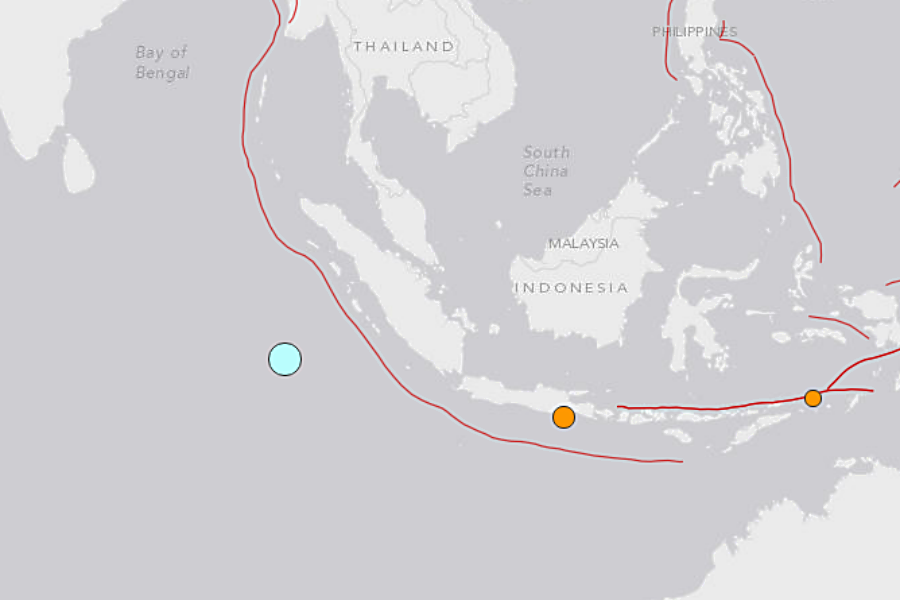Tsunami warnings issued after major earthquake off Indonesia coast
Loading...
| Jakarta, Indonesia
Indonesia issued a tsunami warning on Wednesday after a massive and shallow earthquake struck off the west coast of its island of Sumatra, a region devastated by the 2004 Indian Ocean quake and tsunami.
The warning was issued for West Sumatra, North Sumatra and Aceh after the quake of magnitude 7.9, the National Meteorological Agency said, but rescue efforts will be hampered by the darkness that falls early in the tropical archipelago.
The epicenter was 808 km (502 miles) southwest of Padang, the U.S. Geological Survey said. It was 10 km (six miles) deep.
There were no immediate reports of damage or casualties, but the shallower a quake, the more likely it is to cause damage. USGS originally put the magnitude at 8.2, and then 8.1, before lowering it to 7.9.
"So far there have been no reports (of damage) yet," Andi Eka Sakya, an official of the National Meteorological Agency, told TVOne. "In Bengkulu (on southwest coast of Sumatra) they didn't feel it at all."
President Joko Widodo was staying overnight at a hotel in Medan in North Sumatra and was safe, palace officials said. A Medan resident said he didn't feel the quake.
Marjina, a resident of Sikakap in the Mentawai islands, about 720 kilometers (450 miles) from the epicenter, told the Associated Press that the quake was felt weakly there, but the tsunami warning caused panic among villagers, who ran to higher ground.
Neighboring Australia issued a tsunami watch for parts of its western coast.
Indonesia, especially Aceh, was badly hit by the Indian Ocean tsunami in 2004.
A 9.15-magnitude quake opened a fault line deep beneath the ocean on Dec. 26, 2004, triggering a wave as high as 17.4 meters (57 feet) that crashed ashore in more than a dozen countries to wipe some communities off the map in seconds.
The disaster killed 126,741 people in Aceh alone.
Indonesia straddles the so-called "Pacific Ring of Fire," a highly seismically active zone, where different plates on the earth's crust meet and create a large number of earthquakes and volcanoes.
The US Geological Survey describes this seismic zone:
The plate boundary southwest of Sumatra is part of a long tectonic collision zone that extends over 8000 km from Papua in the east to the Himalayan front in the west. The Sumatra-Andaman portion of the collision zone forms a subduction zone megathrust plate boundary, the Sunda-Java trench, which accommodates convergence between the Indo-Australia and Sunda plates. This convergence is responsible for the intense seismicity and volcanism in Sumatra. The Sumatra Fault, a major transform structure that bisects Sumatra, accommodates the northwest-increasing lateral component of relative plate motion.
(Editing by Clarence Fernandez)







